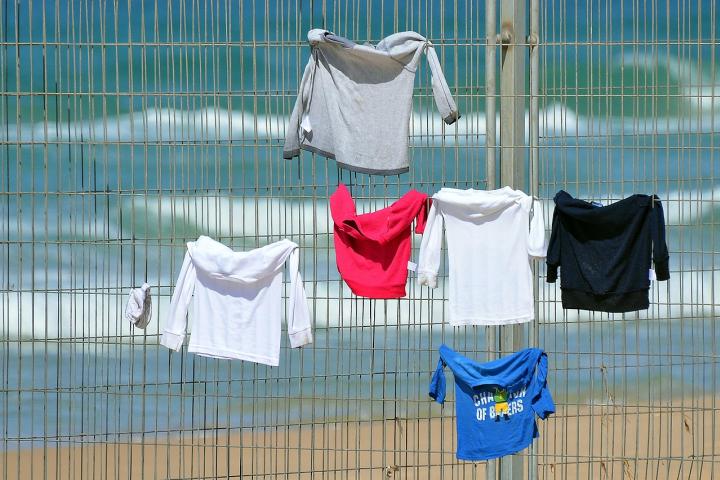The fashion industry, including T-shirt production, has significant environmental impacts. However, a growing focus on sustainability is driving change. Eco-friendly T-shirts offer a way to enjoy fashion while minimizing harm to the planet. This guide explores how T-shirts can be made eco-friendly, covering materials, production processes, and consumer practices.
Sustainable Materials
Organic Cotton
- Characteristics: Grown without synthetic pesticides or fertilizers, using organic farming methods that maintain soil health.
- Benefits: Reduces water usage, lowers carbon footprint, and eliminates harmful chemicals from the production process.
Recycled Fabrics
- Recycled Cotton: Made from post-industrial or post-consumer cotton waste, reducing the need for virgin cotton.
- Recycled Polyester (rPET): Created from recycled plastic bottles, reducing plastic waste and conserving resources.
- Benefits: Decreases landfill waste, conserves natural resources, and reduces energy consumption.
Bamboo
- Characteristics: Fast-growing, requires minimal water, and no pesticides.
- Benefits: Highly renewable, biodegradable, and naturally soft and breathable, making it an excellent fabric for T-shirts.
Hemp
- Characteristics: Hardy plant that grows quickly, requires little water, and no pesticides.
- Benefits: Produces durable, breathable fabric that is naturally resistant to mold and UV rays.
Tencel (Lyocell)
- Characteristics: Made from sustainably sourced wood pulp, primarily eucalyptus trees, in a closed-loop process.
- Benefits: Biodegradable, soft, breathable, and produced with minimal environmental impact.
Eco-Friendly Production Processes
Waterless Dyeing
- Technology: Uses air or other non-water-based methods to apply dyes to fabrics.
- Benefits: Significantly reduces water consumption and eliminates water pollution from dye runoff.
Digital Printing
- Technology: Prints designs directly onto fabric using inkjet technology, reducing waste and water usage.
- Benefits: Allows for precise and vibrant prints with less environmental impact, suitable for small batches and custom designs.
Closed-Loop Manufacturing
- Process: Recycles waste materials and by-products within the production process to minimize waste.
- Benefits: Reduces the environmental footprint by ensuring that all materials are reused, promoting a circular economy.
Biodegradable Inks and Dyes
- Characteristics: Made from natural, non-toxic substances.
- Benefits: Reduces the release of harmful chemicals into the environment and enhances the biodegradability of the final product.
Sustainable Packaging and Shipping
Eco-Friendly Packaging
- Materials: Use recycled or biodegradable packaging materials such as recycled paper, cardboard, or compostable plastic alternatives.
- Benefits: Reduces waste and environmental impact from packaging materials.
Efficient Shipping Practices
- Strategies: Optimize shipping routes, use eco-friendly packaging, and choose carbon-neutral shipping options.
- Benefits: Minimizes the carbon footprint associated with transportation and delivery.
Ethical Labor Practices
Fair Trade Certification
- Standards: Ensures fair wages, safe working conditions, and ethical treatment of workers throughout the supply chain.
- Benefits: Promotes social sustainability and ethical production practices.
Transparent Supply Chains
- Transparency: Brands provide information about their supply chain, including sourcing, manufacturing, and labor practices.
- Benefits: Allows consumers to make informed choices and supports brands committed to ethical practices.
Consumer Practices
Choosing Sustainable Brands
- Research: Look for brands that prioritize sustainability and transparency in their production processes.
- Certifications: Seek out certifications such as GOTS (Global Organic Textile Standard), Fair Trade, and OEKO-TEX.
Caring for T-Shirts
- Washing: Wash in cold water and air dry to save energy and prolong the life of the T-shirt.
- Repairing: Mend small holes or tears instead of discarding the T-shirt to reduce waste.
- Recycling: When a T-shirt reaches the end of its life, recycle it through textile recycling programs or donate it if still wearable.
Supporting Second-Hand Markets
- Thrifting: Purchase T-shirts from thrift stores or second-hand shops to reduce demand for new production.
- Swapping: Participate in clothing swaps to refresh your wardrobe without buying new items.
Case Studies: Eco-Friendly T-Shirt Brands
Patagonia
- Practices: Uses organic cotton, recycled materials, and Fair Trade certified factories. Implements sustainable production techniques and advocates for environmental causes.
- Impact: Patagonia’s commitment to sustainability has set a high standard in the industry, proving that eco-friendly practices can be profitable and influential.
Tentree
- Practices: Plants ten trees for every item sold, uses sustainable materials like organic cotton, hemp, and recycled polyester.
- Impact: Tentree has gained a loyal following for its commitment to sustainability and environmental restoration, making a significant impact on reforestation efforts.
Allbirds
- Practices: Uses sustainable materials such as Tencel and merino wool, focuses on low-impact production processes, and maintains transparency in its supply chain.
- Impact: Allbirds' transparency and dedication to sustainability have made it a leader in eco-friendly fashion, inspiring other brands to follow suit.
T-Shirts: https://thereclaimcollection.com/collections/t-shirt
Conclusion
The Importance of Eco-Friendly T-Shirts
Eco-friendly T-shirts represent a crucial step towards a more sustainable fashion industry. By choosing sustainable materials, ethical production processes, and responsible consumer practices, we can reduce the environmental impact of T-shirt production and promote a healthier planet.
Making Informed Choices
Consumers have the power to drive change by supporting brands that prioritize sustainability and ethical practices. Making informed choices about the T-shirts we buy and how we care for them can significantly impact the environment.
Visit Site: https://thereclaimcollection.com/
Final Thoughts
As awareness of environmental issues continues to grow, the demand for eco-friendly T-shirts will likely increase. By embracing sustainable practices, the fashion industry can create stylish, comfortable, and environmentally responsible clothing that benefits both people and the planet.
FAQs
1. What makes a T-shirt eco-friendly?
- An eco-friendly T-shirt is made from sustainable materials, produced using environmentally friendly processes, and often involves ethical labor practices.
2. Why is organic cotton better for the environment?
- Organic cotton is grown without synthetic pesticides and fertilizers, reducing water usage, lowering carbon footprint, and eliminating harmful chemicals from the production process.
3. How does waterless dyeing benefit the environment?
- Waterless dyeing significantly reduces water consumption and eliminates water pollution from dye runoff, making it a more sustainable option for textile dyeing.
4. What are some certifications to look for in eco-friendly T-shirts?
- Look for certifications such as GOTS (Global Organic Textile Standard), Fair Trade, and OEKO-TEX, which indicate sustainable and ethical production practices.
5. How can consumers contribute to sustainability in the T-shirt industry?
- Consumers can contribute by choosing sustainable brands, caring for their T-shirts responsibly, recycling old T-shirts, and supporting second-hand markets.
Created by: Zac Efron


















